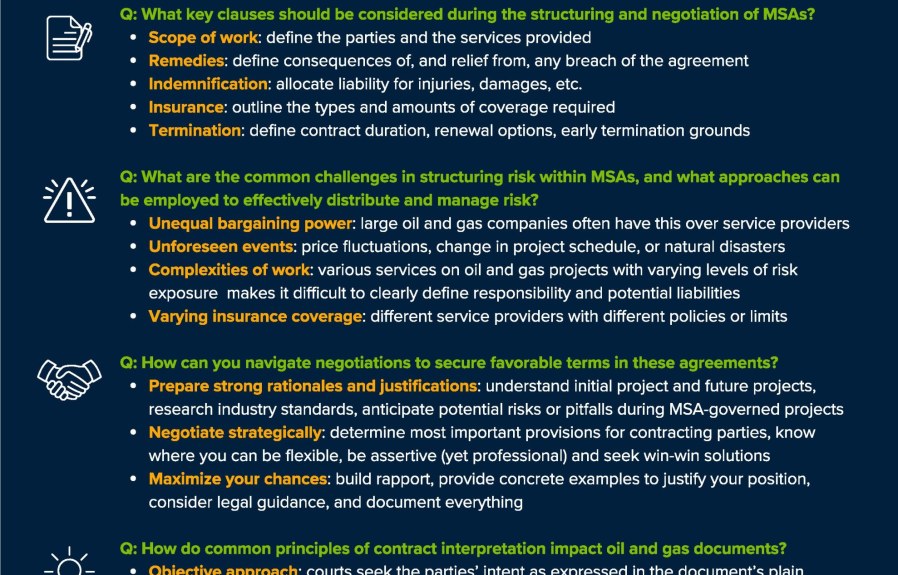Insurance liability limits determine the maximum amount an insurer will pay for a covered claim. These limits protect policyholders from financial loss due to claims against them.
When selecting liability limits, consider the potential risks and costs involved in a claim exceeding the limit. Understanding insurance liability limits is crucial in making informed decisions to safeguard your assets and finances. It is important to accurately assess your level of risk exposure and select appropriate coverage limits to ensure adequate protection.
By maintaining sufficient liability limits, you can mitigate the financial risks associated with potential claims and secure peace of mind.

Credit: twitter.com
2. Types Of Insurance Liability Limits
2. Types of Insurance Liability Limits
2.1 Per Person Limit
A per person limit is the maximum amount an insurance policy will pay per injured individual.
2.2 Per Occurrence Limit
A per occurrence limit is the maximum amount an insurance policy will pay for all claims resulting from a single incident.
2.3 Aggregate Limit
An aggregate limit is the total amount an insurance policy will pay for all covered claims during a policy period.
2.4 Split Limit
A split limit policy sets separate maximum limits for bodily injury per person, bodily injury per accident, and property damage per accident.
2.5 Combined Single Limit
A combined single limit policy provides a single total limit that can be used for bodily injury and property damage claims, without separate per-person or per-accident limits.
3. Determining The Right Insurance Liability Limits
Insurance liability limits refer to the maximum amount an insurance policy will pay. Determining the right limits is crucial to ensure proper coverage in case of a claim. Adequate liability limits help protect assets and provide financial security in unforeseen events.
Insurance liability limits play a crucial role in safeguarding your assets and financial well-being in case of unexpected events. By understanding how to determine the appropriate coverage levels, you can ensure adequate protection for your needs.3.1 Assessing Potential Risks And Exposures
Identify potential risks related to your business operations to determine the level of liability coverage needed.3.2 Evaluating Current Assets And Future Earnings
Evaluate your assets and potential future earnings to make informed decisions about insurance limits.3.3 Considering Industry Standards And Legal Requirements
Review industry standards and legal mandates when setting liability limits to align with regulations and best practices. In assessing risks, assets, and legal requirements, you can determine the most suitable insurance liability limits for your unique circumstances.4. Consequences Of Choosing Inadequate Liability Limits
When it comes to insurance liability limits, making the right choice is crucial. Opting for inadequate limits can have severe consequences for individuals, businesses, and organizations. In this section, we will discuss three major repercussions of choosing insufficient liability coverage.
4.1 Financial Losses And Increased Expenses
Inadequate liability limits can lead to significant financial losses and increased expenses. Should an unfortunate incident occur that results in a claim, insufficient coverage may leave individuals or businesses responsible for paying out-of-pocket for damages beyond their policy’s limits.
This can have devastating consequences, causing financial hardship, draining savings, or even forcing businesses to shut down. Moreover, the expenses associated with legal fees, court settlements, and medical bills can quickly add up, further exacerbating the financial burden.
By making the mistake of choosing inadequate liability limits, individuals and businesses risk their financial stability and peace of mind. It is crucial to carefully assess potential liabilities and ensure adequate coverage to safeguard against financial losses.
4.2 Legal And Lawsuit Risks
Opting for inadequate liability limits also exposes individuals and businesses to legal and lawsuit risks. In the event of an accident, injury, or damage caused by negligence, the injured party may file a lawsuit seeking compensation.
If the liability limits are insufficient, it leaves individuals or businesses vulnerable to claims for which they may be personally liable. This can result in lengthy legal battles, costly settlements, and a tarnished reputation. Furthermore, without adequate coverage, individuals may find themselves struggling to defend their interests in court.
By choosing inadequate liability limits, individuals and businesses not only jeopardize their financial well-being but also put their legal standing at risk. It is essential to consider potential legal implications and opt for comprehensive liability coverage to mitigate these risks effectively.
4.3 Reputational Damage
Another consequence of inadequate liability limits is reputational damage. In today’s interconnected world, news of accidents, lawsuits, or incidents can spread quickly, exerting a significant impact on an individual’s or business’s reputation.
If an individual or business is held liable for damages and unable to satisfy the claims due to insufficient coverage, it may result in negative publicity, loss of trust, and damage to their reputation. This can have far-reaching effects, such as a decline in customer base, reluctance from business partners to collaborate, and difficulty attracting new opportunities.
Understanding the potential reputational risks associated with insufficient liability limits is essential. Taking proactive measures to secure adequate coverage demonstrates a commitment to responsibility and safeguards against detrimental harm to one’s personal or business reputation.
5. Factors Affecting Insurance Liability Limits
When it comes to insurance liability limits, there are several factors that can influence the amount of coverage a business may need. Understanding these factors is crucial in determining the appropriate level of protection for your business. Here are the 5 key factors that can affect insurance liability limits:
Type Of Business Or Industry
The nature of your business and the industry it operates in play a significant role in determining insurance liability limits. Certain industries may inherently carry more risk, such as construction or healthcare, requiring higher liability limits to adequately protect against potential claims.
Business Size And Revenue
The size and revenue of a business directly impact its exposure to liability risks. Larger businesses with higher revenue streams generally face greater liability risks, necessitating higher insurance liability limits to safeguard their operations and assets.
Previous Claims History
The claims history of a business is a critical factor in determining insurance liability limits. A history of frequent or severe claims may result in higher premiums and lower liability limits, whereas a clean claims record could potentially lead to more favorable coverage terms.
Market Conditions And Competition
The prevailing market conditions and competitive landscape can also influence insurance liability limits. In a highly competitive market, businesses may opt for higher liability limits to gain a competitive edge and enhance their perceived reliability and trustworthiness among customers.
6. Strategies For Managing Insurance Liability Limits
6. Strategies for Managing Insurance Liability Limits
6.1 Regularly Review And Update Coverage
When it comes to managing insurance liability limits, it’s essential to regularly review and update your coverage to ensure it aligns with your current needs. Scheduling annual reviews with your insurance agent is a proactive way to stay on top of any changes in your business operations, assets, or potential risks. By keeping your coverage up-to-date, you can avoid being underinsured in the event of a claim.
6.2 Consider Excess Liability Insurance
If you’re concerned about the adequacy of your primary liability coverage, consider adding excess liability insurance to provide an extra layer of protection. Excess liability insurance kicks in when your primary policy’s limits are reached, offering additional coverage for catastrophic events or lawsuits with high settlement amounts. This can safeguard your assets and provide peace of mind in case of unforeseen circumstances.
6.3 Work With An Experienced Insurance Agent
Partnering with an experienced insurance agent is crucial for effectively managing insurance liability limits. An knowledgeable agent can help you understand the complexities of liability limits and recommend the most suitable coverage options for your specific business needs. They can also assist in identifying potential gaps in coverage and advising on necessary adjustments to mitigate risks.
6.4 Implement Risk Management Practices
In addition to maintaining proper insurance coverage, implementing robust risk management practices can contribute to effectively managing liability limits. This involves identifying potential risks, such as workplace hazards or customer interactions, and taking proactive measures to mitigate them. By addressing risks at their source, you can minimize the likelihood of claims and reduce the need for extensive liability coverage.

Credit: fastercapital.com
7. Case Studies: Real-life Examples Of Insurance Liability Limits
Real-life examples can help us understand the importance of insurance liability limits in different industries. Let’s explore three case studies that demonstrate how liability limits play a crucial role in protecting businesses and individuals.
7.1 Construction Company Liability Limits
In the construction industry, accidents can happen despite strict safety measures. Let’s consider a scenario where a construction company is sued for bodily injury caused by a falling object at a worksite. The company’s liability insurance policy has a limit of $1 million for bodily injury claims.
The injured party, a worker, incurs medical expenses of $500,000 and claims additional compensation for lost wages and pain and suffering. Since the liability limit is $1 million, the insurance company covers the medical expenses fully but may provide only partial coverage for the other damages.
This case study highlights the importance of setting an appropriate liability limit for construction companies. Adequate coverage ensures that businesses can afford legal representation and potential damages without facing financial ruin.
7.2 Professional Services Liability Limits
Professional service providers, such as lawyers or consultants, face the risk of lawsuits due to errors or omissions in their work. Consider a situation where a client hires a financial consultant to manage their investments. The consultant makes an incorrect investment decision that results in significant financial losses for the client.
The client files a lawsuit against the consultant, seeking $2 million in damages. Luckily, the consultant has professional liability insurance with a limit of $5 million. This insurance coverage protects the consultant by covering legal fees, settlements, and potential judgments up to the policy limit.
This case study emphasizes the need for professional service providers to carry sufficient liability insurance. In the event of a lawsuit, having adequate coverage can safeguard their reputation and financial stability.
7.3 Product Liability Limits
Product manufacturers must protect themselves against claims arising from defective products. Let’s consider a case where a consumer sues a company for injuries caused by a faulty electronic device. The consumer claims $3 million in damages, including medical expenses, lost wages, and compensation for pain and suffering.
The company has product liability insurance with a limit of $2 million. As a result, the insurance company covers the consumer’s medical expenses in full, but the remaining damages exceed the policy limit. The company may have to pay the remaining amount out of pocket, which could have significant financial implications.
This case study highlights the importance of companies appropriately assessing their product liability risk and obtaining insurance coverage that aligns with potential damages. Having adequate liability limits safeguards businesses from substantial financial burdens in the event of product-related lawsuits.

Credit: castlerockinsurance.com
Frequently Asked Questions On What Are Insurance Liability Limits
What Are Insurance Liability Limits?
Insurance liability limits refer to the maximum amount your insurer will pay for a covered claim. It’s important to understand these limits to ensure you have adequate coverage in the event of an accident or injury. With the right limits in place, you can protect yourself financially.
Conclusion
Understanding insurance liability limits is crucial for protecting yourself financially in case of an unforeseen event. By having the right coverage, you can ensure that you won’t be left with substantial out-of-pocket expenses. From bodily injury to property damage, liability limits determine the maximum amount your insurance will pay.
It’s important to carefully evaluate your needs and consider factors such as risk exposure and state requirements. By doing so, you can make an informed decision that provides you with the peace of mind you deserve.



Leave a comment